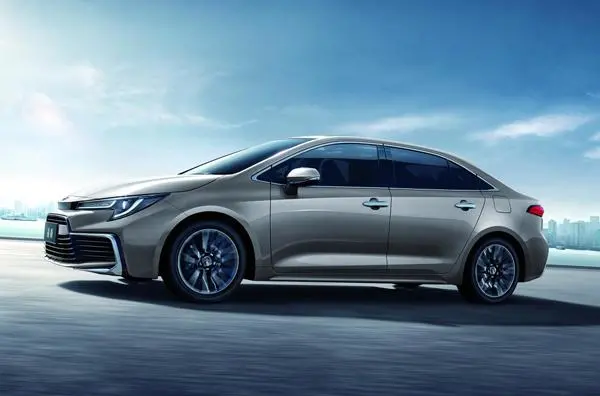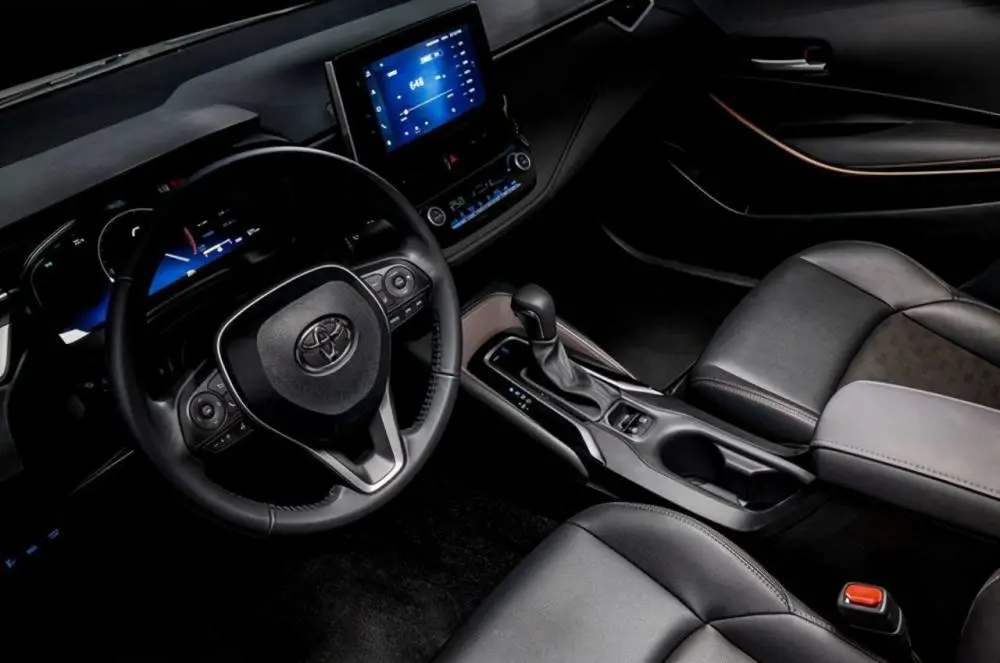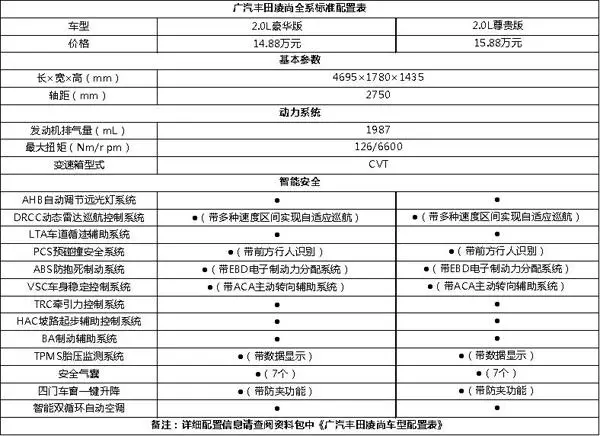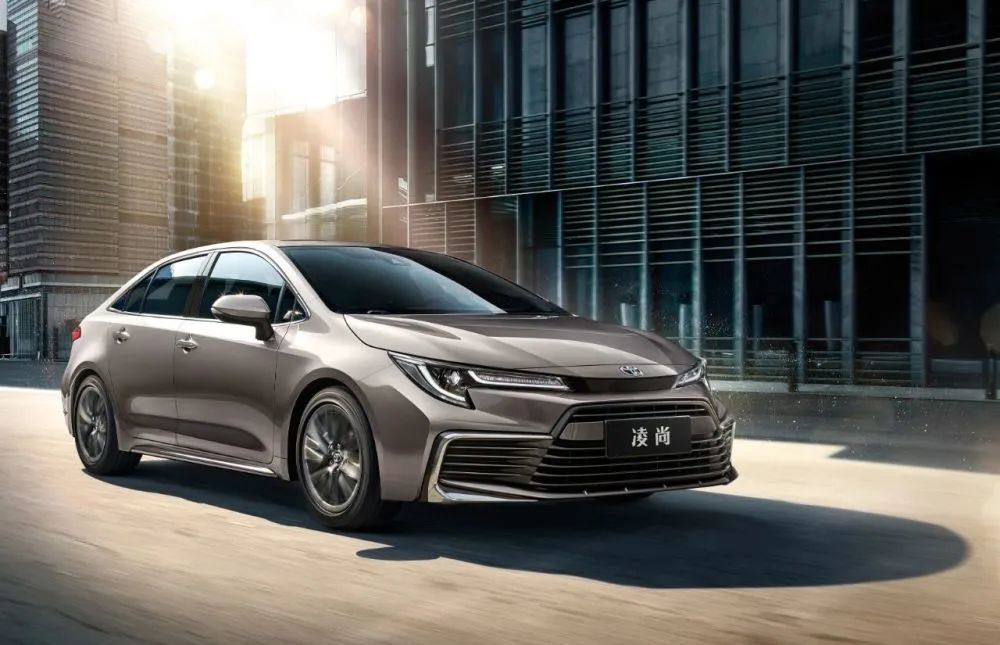Author: Wang Yunpeng
On June 6th, GAC Toyota officially launched its new compact sedan, the Lingzhi. The new car is built on the Toyota TNGA GA-C platform and comes in two models – the luxury version and the premium version, priced at 148,800 yuan and 158,800 yuan, respectively. The Lingzhi is a sister model to the First Automobile Works (FAW) Toyota Asiatic Lion.
According to the GAC Toyota’s “leaping upward” concept, the Lingzhi is positioned as an A+ level car, emphasizing its superior performance and high-quality travel services. “The launch of the Lingzhi is not just a simple product upgrade or market positioning, but a new leap forward for GAC Toyota towards a younger audience. It is an exclusive customized gift that enhances the sense of value for young friends,” said Wen Dali, executive vice president of GAC Toyota.
It is known that the Lingzhi was released at the 2020 Guangzhou Auto Show as a strategic model launched by GAC Toyota to fill the gap between the Levin and Camry. Although the car was highly anticipated, the name “Lingzhi” was not recognized by Chinese consumers, as the word “Ling” in Chinese denotes the act of insulting or disrespecting one’s elders. The word “Lingzhi” appears with this meaning in the Chinese dictionary. According to Jin Ge Hong’s Baopuzi-Han Guo, “Mocking the pretty, insulting the noble, called Xiao Huo Ya Yun, destroying the square and round, and those who respond by echoing the surface, is called an unparalleled beauty.”
In fact, the sister model of Lingzhi, the Asiatic Lion, also had an unpopular name before its official launch. When it debuted at the 2020 Guangzhou Auto Show, it was named the ALLION and the Chinese name was “Ao Lan,” with the intention of showing a sense of “arrogance and pride, riding the waves of the sea.” However, due to the bad connotations in the Shantou dialect, it became the biggest embarrassment in the auto industry in 2020. In response to public opinion, FAW Toyota renamed it the Asiatic Lion.
It is worth mentioning that the Asiatic Lion, which had a difficult start, has not performed very well in the market so far, with data showing that it only sold just over 3,900 units in its first month on the market. As for Lingzhi, although it did not go through the same troubles of renaming and delays as its sister model, it is still difficult to say whether its market performance will be better than that of the Asiatic Lion.
Another “facelift” car
There are rumors in the industry that shortly after the launch of the new TNGA-based Corolla and Levin, Toyota announced its plan to launch a long wheelbase version. The reason is simple – the TNGA-based Corolla and Levin are not as spacious as the old models, which many consumers cannot accept.
To prevent some potential consumers from turning to same-level products of brands such as Volkswagen, Nissan, and Honda, it is obviously necessary to launch an A+ level car that fills the gap between A and B-level models.Currently, Volkswagen is the brand that has been deeply cultivating the A+ sedan market in China for the longest time. Taking FAW-Volkswagen as an example, relying on the Sagitar model, FAW-Volkswagen has earned a lot of money in the A+ sedan market. Data shows that since Sagitar was launched many years ago, it has always ranked high in sedan sales, comparable to Corolla and Levin. After launching the long-wheelbase version, its sales have further increased.

Seeing its old rival thriving in the A+ subdivision market, Toyota will naturally not stand idly by. Therefore, FAW Toyota launched the Asia Lion and GAC Toyota launched the Lingzhi. Although the two models adopted new names and positioned themselves as A+, they are essentially “facelift” cars. Among them, the Asia Lion was facelifted from the Corolla, while the Lingzhi was a “copy” of the Levin.
This can be seen from the appearance and interior design of the Lingzhi. Although Lingzhi is a new car with completely redesigned front grilles, headlights, tail lines, etc., one can still see the shadow of Levin, especially the side of the car, which is almost identical to Levin. Compared with the slightly different exterior design, the interior of Lingzhi can be said to be a “copy” of Levin. For example, the design of the steering wheel, instrument panel, central control screen, and two-sided air conditioning area all indicate that Lingzhi and Levin are of the same origin.

In terms of body size, Lingzhi is 4720/1780/1435 mm in length, width, and height, respectively, and has a wheelbase of 2750 mm. Compared with Levin, the car width remains the same, the length increases by 80 mm, the wheelbase increases by 50 mm, and the height decreases by 20 mm. And this has become the main evidence for Lingzhi being regarded by the industry as a Levin facelift car.

However, Lingzhi, which has been criticized as a facelift car, does have highlights. In terms of intelligent network connection, the high-end Lingzhi model is equipped with a 12.3-inch full LCD instrument panel and a 9-inch floating central control screen, and is equipped with a car networking system with voice control and remote control, which can provide functions such as remote start of the air conditioner and remote search for the car.
In terms of safety configuration, Lingzhi is equipped with the Toyota TSS2 intelligent driving safety suite, including PCS pre-collision safety system, DRCC dynamic radar cruise control system, LTA lane departure tracking assistance system, and AHB automatic high beams adjustment system, which can achieve precise L2-level automatic driving.
Will it be better than the Asia Lion?The competition in the A+ sedan market in China seems not fierce, with only a few models such as FAW-Volkswagen Sagitar and Geely Starwise are popular. Therefore, some believe that, with the endorsement of Toyota, LingShang’s sister model, Yaris, could easily carve out a place in the A+ market.
However, the reality did not turn out as expected by FAW-Toyota. Data shows that, in the first month of Yaris’ release, less than 4000 units were sold, far from being a mainstream hot-selling model. Compared with Yaris, although LingShang’s top-of-the-line model has a lower price, the starting price is higher than the former, and there are only two models to choose from. Therefore, it is hard to say that some potential consumers would not prefer to buy Yaris.
In addition, since the overall downturn of the domestic car market in 2018, almost all brands have played the “price reduction card”. In the A-level car market, Honda Civic generally has a discount of ¥5000 at the sales terminal, and popular models such as Dongfeng Nissan Sylphy and Buick Excelle have discounts of over ¥10,000. Moreover, the entry-level versions of second-line B-level cars such as Chevrolet Malibu, Buick Regal, and Skoda Superb are also priced comparably to LingShang after discount.
Even leaving aside the second-line B-level cars mentioned above, LingShang’s sister model, Yaris, already has a discount of nearly ¥10,000. Under such circumstances, how many consumers will choose LingShang? It is still unknown.
Meanwhile, from the perspective of product strength, it may also be difficult for LingShang to make a difference. In terms of power, LingShang is equipped with a 2.0L engine with a maximum power of 126 kW and a maximum torque of 205 N·m, equipped with a Direct Shift CVT transmission that can simulate ten gears. On the other hand, Starwise, priced between ¥113,700 and ¥149,700, is equipped with a 2.0T+7DCT power combination, with a maximum power of 140 kW and a peak torque of 300 N·m.
In terms of intelligence, although LingShang is equipped with a vehicle networking system with voice control and remote control, this function is only available on top-of-the-line models. Moreover, compared with Starwise’s OTA cloud upgrade system, 7.5-inch full-color HUD, APA automatic parking system, 540° panoramic perspective imaging, IHBC intelligent high beam control, and GKUI Geely intelligent eco-system, LingShang’s vehicle networking function is not advantageous.Furthermore, unlike FAW Toyota Asia Lion’s compromise in public opinion, GAC Toyota continues to use the name “Ling Shang” which carries the meaning of “insulting elders” for its new car. Whether this approach is appropriate may no longer need to be discussed.
Generally speaking, under various pressures, it remains to be seen whether “Ling Shang” can outperform Asia Lion and meet the expectations of GAC Toyota in the market.
This article is a translation by ChatGPT of a Chinese report from 42HOW. If you have any questions about it, please email bd@42how.com.
